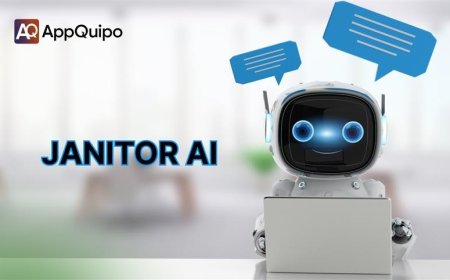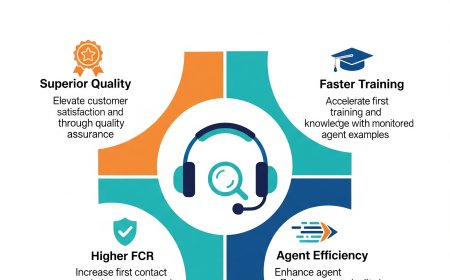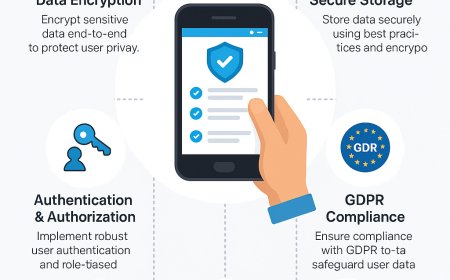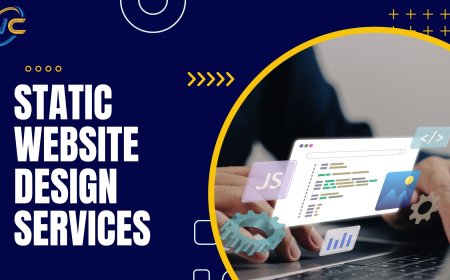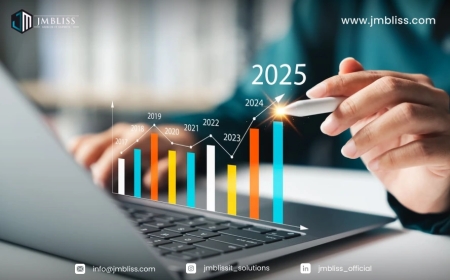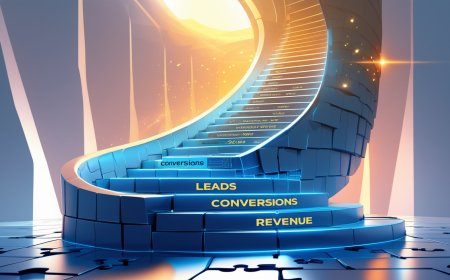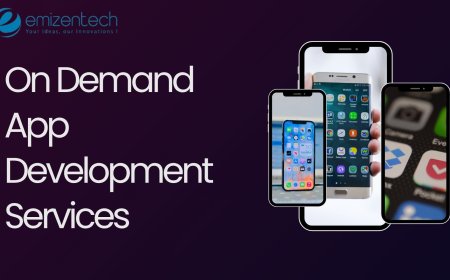Integrating AI in UX Design: Smarter Personalization That Converts
Discover how integrating AI in UX design leads to smarter personalization, improved user engagement, and higher conversions. Learn practical strategies for future-ready UI/UX experiences.

In todays digital landscape, users expect personalized, intuitive, and seamless experiences across all platforms. Businesses that fail to meet these expectations risk falling behind in a competitive market. Enter artificial intelligence (AI): a transformative force that's redefining how UX designers create meaningful interactions. When thoughtfully integrated, AI can enhance user journeys, predict behavior, and offer real-time solutions that feel tailor-madeultimately increasing conversions and engagement.
This article explores how AI is reshaping UX design by enabling smarter personalization and providing tangible strategies to make your designs more adaptive, data-driven, and conversion-focused.
The Role of Personalization in UX
Personalization in UX isnt new. For years, designers have worked to create experiences that resonate with individual users, using methods like A/B testing, user personas, and customer journey mapping. However, traditional techniques have limitationsthey often rely on static data, assumptions, and manual updates.
AI changes the game by enabling real-time, adaptive personalization. It helps designers move beyond generalized personas to deliver dynamic, user-specific experiences based on actual behavior, preferences, and context.
Whether it's recommending a product, adjusting interface elements, or offering intelligent search results, AI can tailor the entire user journeyboosting satisfaction and improving business outcomes.
How AI Enhances UX Design
1. Behavioral Analytics and Predictive Modeling
AI can process large volumes of user data to detect patterns that would otherwise go unnoticed. This includes click paths, session durations, scrolling behavior, and even mouse movements. Predictive models built on this data can forecast user actions, enabling proactive interface adjustments.
For instance, an AI engine can identify when a user is likely to abandon a cart and trigger a personalized prompt or offer. This level of precision allows for just-in-time interventions that boost retention and drive conversions.
2. Adaptive Interfaces
Static interfaces are becoming a thing of the past. AI enables adaptive interfaces that respond to user behavior in real time. For example, a dashboard might prioritize different data visualizations for a marketer versus a developer based on usage patterns.
By continually learning and adapting, these interfaces feel more intuitive and relevant, reducing friction and guiding users toward their goals more efficiently.
3. AI-Powered Content Personalization
Content is kingbut only if it's relevant. AI helps personalize not just the layout but also the content users see. By analyzing browsing history, purchase behavior, and demographic data, AI can present the most relevant blogs, videos, or product suggestions to each user.
Netflix and Amazon are prime examples. Their recommendation engines rely on AI to surface content that users are more likely to engage with, based on past interactions.
4. Conversational Interfaces and Chatbots
Chatbots and virtual assistants powered by AI offer another layer of personalization. They can answer questions, guide users through complex workflows, and even complete transactionsall while learning from interactions to become more efficient over time.
Unlike traditional customer support, these systems are available 24/7, offering consistent and scalable help across devices.
5. Emotion Recognition and Sentiment Analysis
AI systems can analyze facial expressions, voice tone, and text sentiment to gauge user emotions. This is especially powerful in applications like mental health apps, e-learning platforms, or gaming, where emotional response is critical to the user experience.
Designers can use this data to adjust the tone, pacing, or complexity of contentmaking the experience feel more empathetic and human.
Practical Applications of AI in UX Design
Personalized Onboarding Flows
AI can tailor onboarding experiences based on user type, industry, or prior knowledge. Instead of showing the same tutorials to everyone, AI ensures that each user only sees whats most relevant to themaccelerating adoption and reducing drop-off.
Smart Search and Navigation
AI enhances search functionality by learning from user queries and behavior. Autocomplete suggestions, voice recognition, and semantic search all contribute to faster and more accurate navigation.
For example, an e-commerce app might adjust its category filters based on regional buying trends or a users previous purchases.
Dynamic Pricing and Offer Presentation
AI can optimize pricing and promotions in real-time, depending on user segments, behavior, and context. This level of personalization makes users feel like the product or service is tailored for them, increasing the likelihood of conversion.
Challenges in Integrating AI with UX
Despite its advantages, integrating AI into UX design isnt without challenges.
Data Privacy Concerns
Users are increasingly concerned about how their data is collected and used. Transparency is critical. Designers must ensure that AI features are clearly explained and that users can opt in or out of personalization efforts.
Bias in AI Algorithms
If not carefully curated, AI can reinforce biasoffering a less inclusive experience. It's essential to train models on diverse datasets and continuously monitor their outputs for fairness and balance.
Loss of Human Touch
Over-automation can make experiences feel impersonal. AI should augment, not replace, the human elements of design. Emotional design, storytelling, and aesthetic choices still play a vital role in engaging users.
The Designers Role in the AI Era
As AI takes on more analytical and responsive tasks, the role of the UX designer is evolving. Designers must now understand data pipelines, machine learning principles, and ethical AI practices. Collaborating with data scientists and engineers becomes crucial to ensure AI enhances rather than detracts from the user experience.
This shift doesn't diminish the importance of UI/UX Designing. Instead, it expands its scopetransforming designers into experience strategists who combine creativity with data intelligence.
Tools like Adobe Sensei, Figma plugins with AI integration, and predictive design systems are making it easier for designers to experiment with AI-driven ideas without writing complex code. These tools help bridge the gap between raw data and visual, usable interfaces.
Future Outlook
As AI continues to mature, well see even deeper integration with UI/UX Designing. Expect to see more real-time personalization, AI-generated prototypes, and systems that adapt not just to users actions, but to their intent and mood.
Designers who embrace AI will be better equipped to craft experiences that feel organic, responsive, and deeply personalizedleading to higher engagement, better retention, and ultimately, more conversions.
Businesses, too, stand to benefit. When users feel understood and supported, theyre more likely to return, recommend, and convert. In an era of digital overload, UI/UX Designing powered by AI becomes a critical differentiator.
Conclusion
Integrating AI into UX design is no longer a futuristic ideait's a current necessity for brands aiming to deliver smarter, personalized, and conversion-focused digital experiences. From predictive analytics and adaptive interfaces to chatbots and emotion recognition, AI offers a vast toolkit to enhance every stage of the user journey.
The key lies in thoughtful integrationbalancing technological possibilities with human empathy and ethical design. When done right, AI doesn't just make interfaces smarter; it makes them more human.
By leveraging AI in your UX strategy, you not only stay ahead of the curve but create experiences that truly resonateturning casual users into loyal customers.























